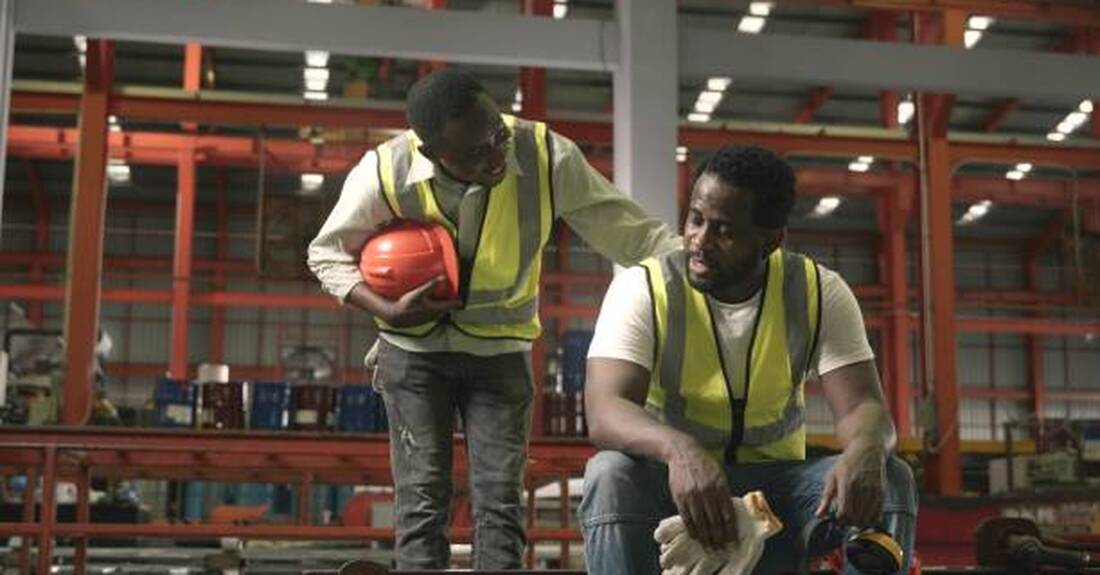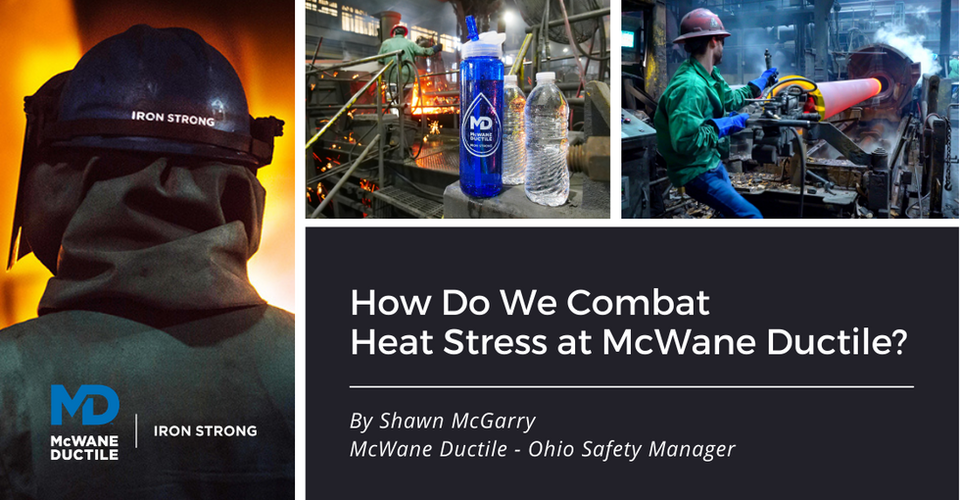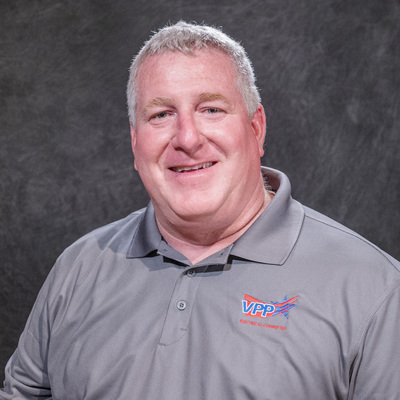The third week of June typically marks the official start of summer in the Northern Hemisphere, but hot and humid conditions are already upon us. Because McWane Ductile manufactures Ductile iron products in a foundry environment, ensuring our employees are safe from injury and illness, such as heat stress, is crucial. This #IronStrong Blog describes the stages of heat stress and how McWane Ductile enables employees to combat this hazard within the foundries during seasons with increased temperatures. The tips listed in this blog can also be applied at home and play.
WHAT IS HEAT STRESS?
Heat stress, also known as heat illness, encompasses a range of conditions in which the body is under duress from overheating. Heat stress can result in heat rash, heat cramps, heat exhaustion, or heat stroke.
WHO IS AT RISK OF HEAT STRESS?
Workers who perform jobs in hot environments or with prolonged exposure to the sun, such as those found in foundries, factories, construction sites, farming, and outdoor work, have an increased risk of injury. Heat can also increase the risk of injuries to workers as it may result in sweaty hands, dizziness, and a lack of concentration, which could contribute to accidents.

WHERE ARE THE RISKS OF HEAT STRESS FOR MCWANE DUCTILE EMPLOYEES?
McWane Ductile manufactures Ductile iron products in the United States at three locations: Phillipsburg, NJ; Coshocton, OH; and Provo, UT. They require physical labor in a foundry environment with multiple hot areas throughout each foundry, such as:
- Melting Deck Operations
- Pouring Deck Operations
- Casting Pipe Areas
- Annealing Oven Areas
- Finishing Hot-Lines
- Shipping
- Maintenance
- Other Outdoor Jobs
WHO IS AT HIGH RISK OF HEAT STRESS?
Healthy individuals can succumb to heat without proper precautions, but those at the highest risk include:
- New Hires and Transfers
- Workers who are 65 years and older
- Those with pre-existing conditions such as:
- Heart Disease
- High Blood Pressure
- Obesity
All employees and their families are encouraged to take precautions against heat while at work, at home, and at play.

WHAT ARE THE STAGES OF HEAT STRESS?
HEAT CRAMPS
Cramps are one of the first signs of heat illness. Sweating depletes the body's hydration and electrolyte levels. Others may not easily recognize this stage.
Symptoms
- Muscle cramps
- Pain or spasms in the abdomen, arms, or legs
First Aid
- Stop all activity
- Rest in a cool place
- Drink water, clear juice, or a sports beverage
- Eat a light snack
- Rest for a few hours after the cramps subside

HEAT EXHAUSTION
Heat exhaustion is the second stage of heat illness, characterized by numerous increased symptoms that coworkers, family, and friends may more easily recognize.
Symptoms
- Rapid heartbeat
- Heavy sweating
- Extreme weakness or fatigue
- Dizziness
- Nausea and/or vomiting
- Irritability
- Fast, shallow breathing
- Slightly elevated body temperature
First Aid
- Stop all activity
- Rest in a cool place
- Drink plenty of water, clear juice, or a sports beverage
- Take a cool shower, bath, or sponge bath
- Seek treatment at the foundry first aid station

HEAT STROKE
The most severe of the stages of heat illness, known as heat stroke, occurs when the body cannot regulate its temperature and can cause permanent disability or death.
Symptoms
- High body temperature
- Confusion
- Loss of coordination
- Hot, dry skin or profuse sweating
- Throbbing headache
- Seizures and/or coma
First Aid
- Requires immediate medical assistance
- Move the worker out of the heat
- Move the worker to a cool, shaded area
- Remove excess clothing
- Apply cool water to the body, focusing on the head, neck, armpits, and groin area
HOW DOES MCWANE DUCTILE PROTECT EMPLOYEES FROM HEAT STRESS?
McWane Ductile has assessed our plant's heat hazards and implemented protective measures to keep our #1 asset safe: our employees. Below is a list of actions taken to combat heat stress:
Cooling Infrastructure
- 15-minute breaks every hour for Casting and Pouring employees
- Accessible, air-conditioned break areas and offices
- Roof coverings or air-conditioned cabs for forklifts and other heavy equipment
- Large cooling fans are placed in areas of need
- Shaded and cooling areas for outdoor workers
- Seasonal rental of large air-moving units to assist in cooling the plant
Hydration
- Purified water dispensers are throughout the facilities
- Free fresh fruit for all employees is delivered daily to departmental break areas
- Squincher Electrolyte Freezer Pops for employees in freezers throughout the plants
- Reusable water bottle giveaways
Personal Protective Equipment (PPE)
- Hardhat sweatbands
- Cooling vests, towels, and bandannas
- Camelbak backpack water/ice canteens
- High-quality, light-weight, burn-resistant PPE
Medical Education & Intervention
- Full-time Nursing Staff
- Proactive health checks from the Safety Department on hot days
- Team culture where co-workers watch each other for signs and symptoms of heat stress
- A medical clearance protocol is followed if a person experiences heat stress
Communication & Training
- Regular training on heat prevention and treatment
- Hydration, diet, and sleep reminders in all plant communication systems
- External communications in the form of a blog, YouTube video, and educational mailer sent to each employee's household (feel free to download the flyer for yourself)
- Iron Line social media app for heat and health-related updates, education, and training
- General Manager provides hydration and diet reminders on a weekly basis during Sunday All-Calls
- National Institute for Occupational Safety and Health (NIOSH) heat index monitoring

Combating heat stress is important at work, at home, or play, especially during warmer months. We’ve sent this informational flyer to McWane Ductile employees. Get a free copy for your family!
DOWNLOAD NOW
ACCLIMATIZATION SCHEDULE:
New Hires and Transfers are required to acclimate over two weeks with gradual exposure in hot working zones from 0% to 100%, as detailed below:
New Hires -
- Day 1 - New hire class 4 hours in heat 0 to 10%
- Day 2 - New hire class 4 hours in heat 10 to 30%
- Day 3 - New hire class 6 hours in heat 30 to 40%
- Day 4 - New hire class 6 hours in heat 40 to 50%
- Day 5 - New hire class 8 hours in heat 50%
- Day 6 - First full day - 50%
- Day 7 - Second full day - 60%
- Day 8 - Third full day - 70 to 80 %
- Day 9 - Fourth full day - 80 to 90%
- Day 10 - Last full day - 90 to 100%
Transferred Employees -
- Day 1 - 20 to 30%
- Day 2 - 30 to 40%
- Day 3 - 40 to 50%
- Day 4 - 50 to 60%
- Day 5 - 70 to 100%
WHAT CAN YOU DO AT WORK AND AT HOME TO COMBAT HEAT STRESS?
Proper Hydration
- Hydrate early, starting before work or play and continuing during a shift or activity
- Do not drink energy drinks (Monster, Red Bull, Rockstar, etc.), and limit soda, alcohol, and coffee/caffeine
- Refer to the Urine Chart below for proper hydration
- Urine should be clear to light yellow
- Dark yellow/brownish urine indicates dehydration
Proper Diet
- Eat proteins before working/playing and throughout the day
- Eat light, fresh fruit snacks
- Do not overeat
Body Awareness
- Know the signs, symptoms, and corrective measures for heat stress
- Report to supervisors, co-workers, family, or friends if you feel hot, dizzy, or ill
- If in the workplace, use heat towels, canteens, and cooling vests if possible
- If in the workplace, remove PPE when using air-conditioned break rooms
- Follow the acclimatization schedule
Summary - Stay Safe and Hydrate
Again, whether at work, at home, or at play, it is essential to stay hydrated, especially during periods of higher temperatures and prolonged sun exposure. Working in a foundry is often strenuous and takes a certain type of #IronStrong person to do so, especially when temperatures rise.
At McWane Ductile, we continually strive to ensure that our employees are safe and protected from heat stress, enabling us to produce products critical to water infrastructure. For more information on heat-related illnesses, visit www.osha.gov/heat-exposure or download the OSHA-NIOSH Heat Safety Tool app for mobile devices at cdc.gov/niosh/topics/heatstress/heatapp.html.
Need Assistance with Your Waterworks Project?
If you have any questions regarding your water or wastewater infrastructure project, please reach out to your local McWane Ductile representative. We have team members who've managed small and large water utility systems, served in engineering consulting firms, and bring decades of experience in solving field issues involving pipeline construction and operation. From design to submittal to installation, we strive to educate and assist water professionals throughout the water and wastewater industry.







